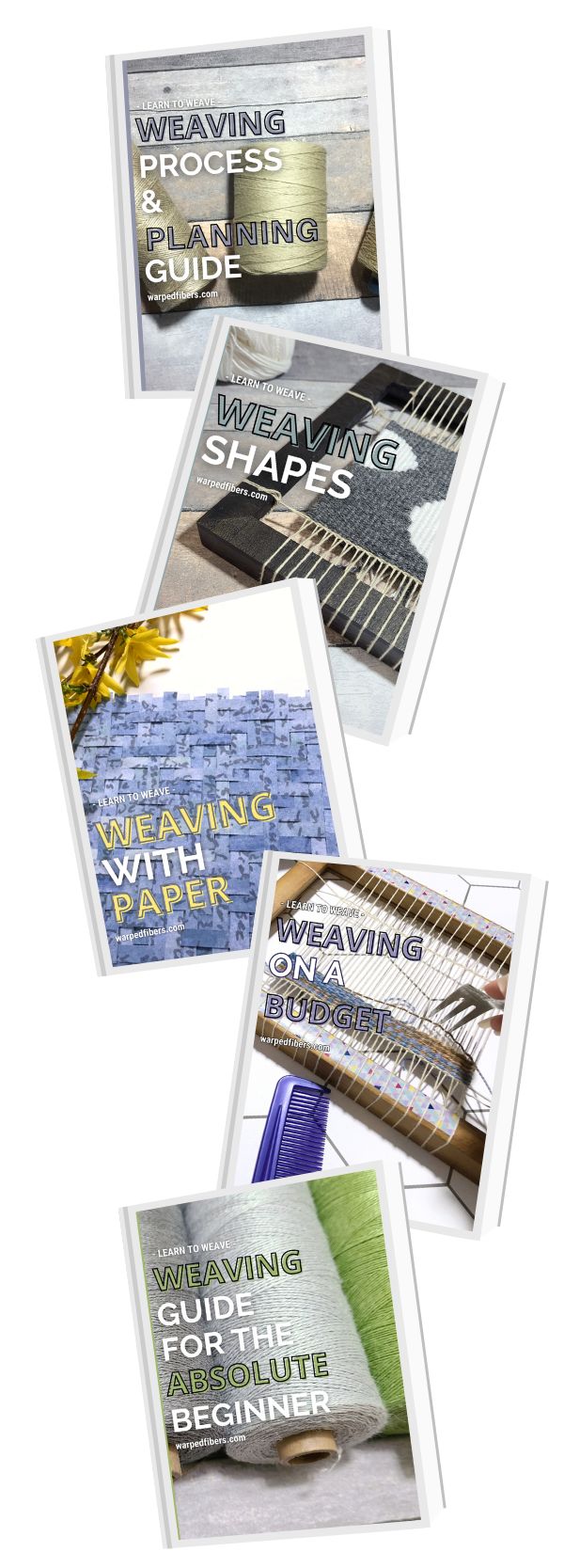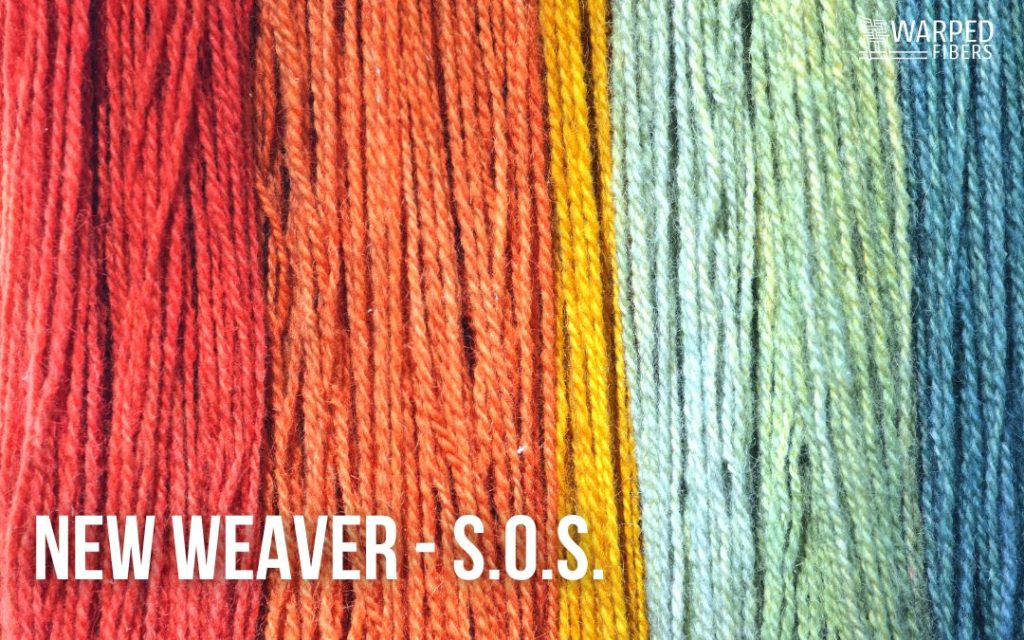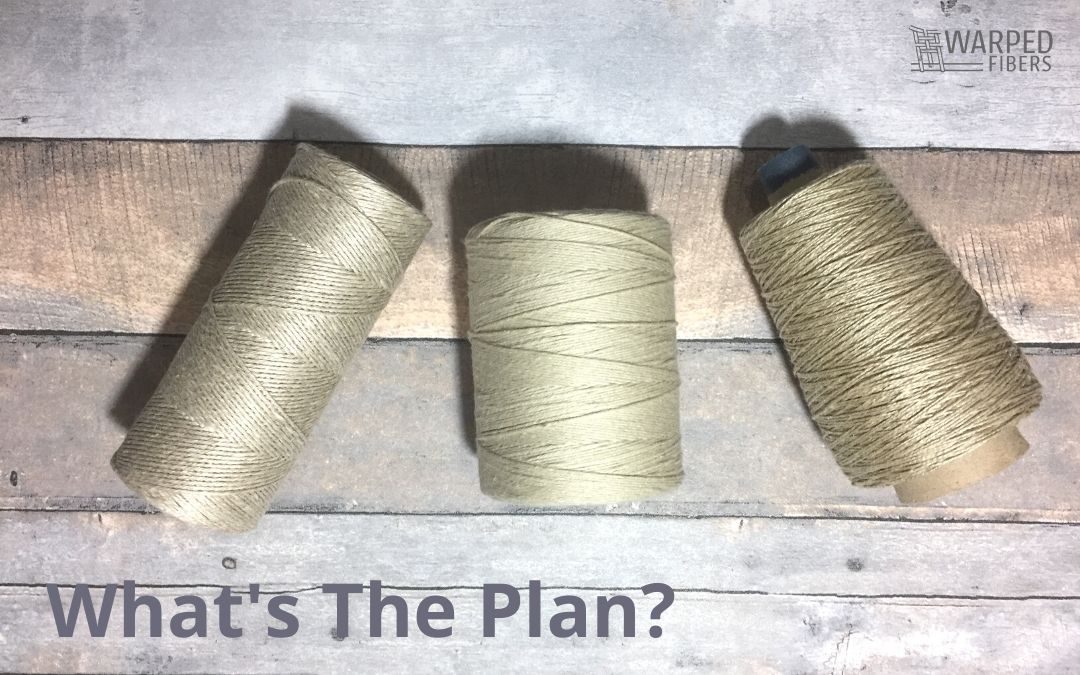Figuring out what loom is right for you is not always the simplest task. There are so many options – some of which do not even seem that different. I know you do not want to spend money on a loom (or any tool) that is not going to work for you in the long run. I do not want that either!
This goes for pretty much everything but today it especially relates to rigid heddle looms and especially the Ashford rigid heddle loom. So since you can not really try before you buy – a review is the next best thing!
This page may contain affiliate links. If you purchase something through these links then I will receive a small commission – at no extra cost to you! Please read our DISCLAIMER for more info. Thanks for the support!
First thoughts on the Ashford rigid heddle loom
Get The Ashford Rigid Heddle Loom On The Woolery
Ashford is a great company that makes many different types of weaving and fiber art tools. So when it comes to rigid heddle looms I was excited to get to try out their “mid-tier” option.
I am not sure they think of their looms in tiers, but they do have 3 rigid heddle loom options, and the simply named Ashford rigid heddle loom falls right in the middle cost-wise. Their other options are the SampleIt loom (a simple and less expensive rigid heddle loom) and the Knitter’s loom (a foldable rigid heddle loom.)
You can think of this loom as the goldilocks option.
Just right.
Let’s look at some of the loom stats:
The Ashford rigid heddle loom comes in 16″, 24″, 32″, and 48″ inch weaving width options, and they all ship with a 7.5 dent reed.
The smallest loom available to purchase (the 16″ weaving width option) is a total of 20″ wide and 24″ deep.
Assembling the rigid heddle loom
Not all rigid heddle looms need to be assembled when you receive them, but it is not an uncommon occurrence. This makes them less expensive and easier to ship. The Ashford rigid heddle loom is no different.
When you order your loom it will come in a long skinny box with the Ashford logo all over it. It sort of feels like a simply wrapped present and who does not like to open presents?!?
Purchasing a loom that is not already constructed has its own pros and cons depending on who you are talking to.
For one, smaller boxes are easier to ship because they will take up less space in the truck they are traveling on. While the weight will not really change, the size can make a difference.
Beyond the loom, in the box, you will also find 2 flat shuttles, a warping peg, and a booklet with information on how to warp your new loom.
If you are in need of more shuttles or other rigid heddle loom accessories you can get those HERE.
Another plus for purchasing an unfinished loom is that you get to finish it yourself. Right out of the box the wood pieces are unstained and unpolished. This gives you the opportunity to make it any color that you want. This may or may not be important to you, but if you want a darker loom (as most rigid heddle looms are made with lighter wood) then this can be a great option.
The unfinished wood can also be a big drawback if you are not into that sort of thing.
If you are looking for a loom that does not need a lot of extra work then I recommend checking out my review on the Schacht Flip Folding rigid heddle loom.
While your loom does not need to be finished to work, it is a good idea to finish your loom if you want it to last as long as it can. Staining and waxing your wood will protect it better from humidity and other moisture.
As far as constructing your loom, the process is relatively simple! The Ashford loom comes with a great instruction booklet with images and directions. There were only a few times that the booklet seemed to fail me and it took me a little bit of time to figure out how to do the next task.
Let’s go over those instances:
The pin
When you are assembling your loom and you get to the part where you are supposed to attach the pawls to the sides of the loom – do not follow the manufacturer’s instructions.
Yep.
The picture in the instructions shows the pin sitting in the middle of the pawl on the edge side. Instead, the pin should be in the middle of the pawl towards the middle of the loom. If you put the pawl on this first way, it will not contact the cog correctly.
Trust me. I tried it.
Using wax
The instructions for putting together your loom mention that you will need some candle wax.
It mentions this in multiple places, but I mostly only used it to lubricate the front and back rollers so that they will turn smoother.
When you get your loom it includes a square of sandpaper in case you need to smooth out any rough parts. I really wish it had also included a small bit of wax as well. I ended up breaking a small tea light candle in order to get some wax to use. If you do not have a candle you want to destroy then this could be quite an annoying part of the process.
You can use this wax for the other parts of the assembly process as directed. It might make it easier to screw your pieces together, but it also is not necessary.
What I like about the Ashford rigid heddle loom
One of my favorite things about this loom is the satisfying way that the heddle slips into place.
Every time I put the heddle back into one of its stationary spots it always slid in smoothly. Especially the down position. The way that the block that holds the heddle is made allows an audible and pleasing pop as it goes into position.
This may sound like a small thing, but it really did make it a pleasure to weave on. Sometimes it is small things like this that can really make or break a loom.
If your loom is not a pleasure to weave on, then why would you weave on it?
The smoothness of this movement is especially surprising to me considering the wood was still unfinished. This tells me that despite being unfinished – the wood was prepared well from the factory.
Despite its slightly lower price tag, the Ashford loom is not a loom that can only be used by beginners. It can definitely be used for beginners, but it also has the ability to grow with the weaver and their abilities and desires to weave more intricate things.
This is all because this loom comes with a built-in spot for a second heddle! Unlike a true beginner rigid heddle loom, the only thing this loom needs to make more complicated weavings is a second heddle.
You can get extra Ashford rigid heddles HERE.
Another really great thing that the Ashford loom has is the ability to add an extended “freedom roller”. This roller allows you to weave with thicker yarns and weave longer weavings. Disclaimer: I have not tried out this roller so I cannot speak to the ease of adding it on or using it, but I love that it has the option.
You can get the Ashford freedom roller HERE.
Cons of the Ashford rigid heddle loom
Personally, I like a loom with a bit less work on the front end. While it was not hard to assemble, I would have rather had it ready to go (or almost ready) right out of the box.
I am impatient.
The biggest con for me is the fact that the wood is unfinished. I know that I mentioned earlier that this could be a big pro for some people, but I am not one of them.
If you really want to put your loom together right then you really should be finishing it first. Taking the time to stain your loom also involves waiting for it to dry and possibly giving it another coat. Beyond that, you will probably also want to finish it off with some polish or wax.
This is something I just do not have time for.
That being said, that is completely subjective and you should make your own decision about how much work you want to have to put into your loom before you can use it.
The second con that I have with this loom is the pawl just does not work as well as I would like. When I go to pull back the pawl to let off the tension and advance my warp you have to be very careful not to pull too hard. If you do then it will pop the pawl out of place and make it no longer effective. The only way to fix this is to push it back into place, but every time I have had to do this (it has been many times) it feels like you are going to break it.
That being said, if you are gentler than I am then it is possible this would not be an issue!
Lastly, this loom has a lot of plastic. Notably, instead of using chords to attach the warp rods to the front and back beams, the Ashford rigid heddle loom uses plastic connectors. While these work the exact same way, there is no reason that I can think of that warrants them being made of plastic.
Who this loom is for
If you are looking for a reasonably priced loom that you want to make your own then this is a great loom for you. While it is not the least expensive rigid heddle loom option, it is one of the least expensive with room to grow. You can use this loom both as a beginner and a more advanced weaver with no issues moving through your weaving journey.
Basically, the Ashford rigid heddle loom is a great loom that was relatively simple to put together, offers room for growth, and is worth the price.




























I bought my 24″ Ashford RHL before reading this, and my experience is the same. I am not mechanical, but fortunately my husband is a handy man/general contractor. He was fine with the assembly. I finished it with two layers of beeswax, completed my first project, and plan to apply another coat before my second project.
I have had problems with that pesky pin you mentioned. I couldn’t get the back gear to release without the pawl dropping back too far, leaving the pin on the wrong side.
I discovered to release it without it popping back I had to disengage the front gear to give it slack, then release the back gear. It took awhile of doing this to intuit that I had to slightly turn the back gear forward (from the top), and THEN draw back the pawl to release the gear without popping the pawl. That way, I didn’t have to release the tension from the front.
Thank you for that insight! I have done that as well. It’s not the best system – but it works!